#it's had an OVA in the 80s
Explore tagged Tumblr posts
Text
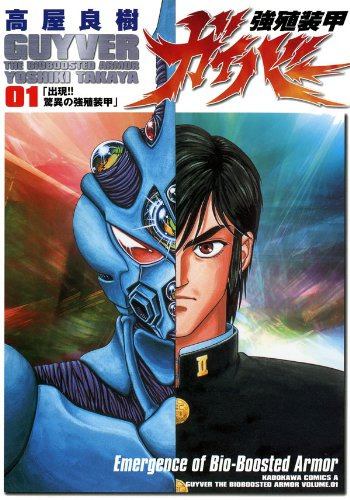
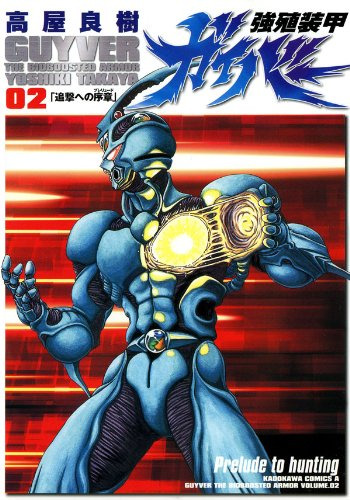
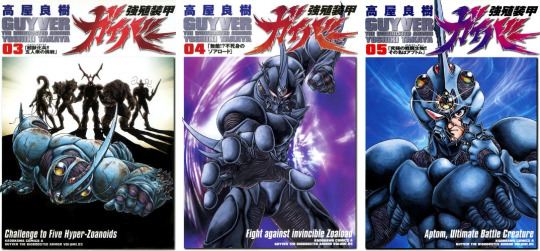
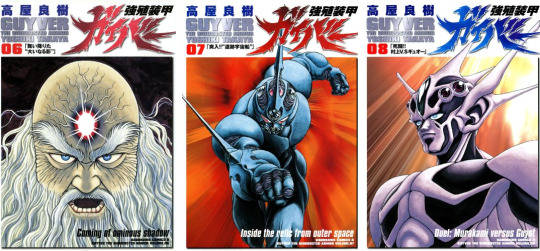






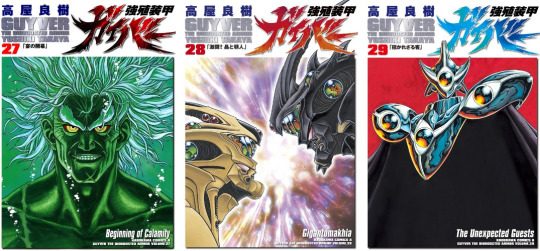

Kyoushoku Soukou GUYVER[強殖装甲ガイバー]
The Bio-Boosted Armor GUYVER
#manga covers#kinda surprised i hadnt gone back for guyver before now#technically ''ongoing'' just on hiatus#probably definitely a dead series#but it ran with some irregularity from 1985 til 2016#and that's a pretty bonkers lifespan for a manga like this#it's had an OVA in the 80s#and a TV series in the 200Xs#it even had two live action movies in the 90s#the second one starred a young David Hayter#he even used the protagonists name#Sean Barker#as a working alias during the rest of his career#oh and Mark Hamill was in the first one#he was featured prominently on the promo art as if he was a main character#he was not#also they turned him into a slug
4 notes
·
View notes
Text

becoming obsessed with devilman . AGAIN
#- wips#devilman#akira fudo#ryo asuka#devilman 1987#primarily went with their 80s designs#I never really draw the 80s versions of them (i love them a lot I’ve just always drawn the modern versions)#it made me realize how similar their hairstyles are with the ova#devilman ova#( -< tag for engagement rahghahgh)#anyways i might redraw akira idk#i didn’t use refs for him :( i had both his first design and after he fused with amon design in mind#ryokira#i love yapping in the tags sorry
39 notes
·
View notes
Text


Fascinated by mashymre's companion here who kinda looks like if they made a clone of amuro and char into one guy
#or alternatively: young char if the origin had existed in the mid 80s and it got an OVA then#ZZ-9#〇
0 notes
Text
Meet the Seiyuu: Maleanor is voiced by Fukami Rica
Fukami says that she did not talk very much as a child, but after being impressed by upperclassmen in her high school’s broadcasting club she decided to join and her gravely voice, pronunciation and enunciation all improved through daily practice.
Voice acting was still an uncommon profession at the time, so Fukami decided to enroll in an announcer training school.

When Fukami submitted her application a teacher told her they had a new voice acting department that she might find that more interesting. She took their advice and changed her career path.
Fukami is a prolific voice-over artist, doing Japanese-language dubs for over 240 movies and 60 TV shows including Angelina Jolie in the live-action Maleficent movie.
Since 1982 Fukami has voiced characters in over 100 anime and OVAs and 80 video games, including Sailor Venus in Pretty Guardian Sailor Moon, with Lilia’s Midorikawa and the Director’s Onosaka
She also voiced Fran in Final Fantasy 12 with Trein’s VA Koyama and Zephia in Fire Emblem Engage, with Ortho’s Aoi, Baur’s Koyasu and Floyd’s Okamoto.

165 notes
·
View notes
Text
Natsume Yuujinchou Episode/Chapter Guide
Updated: 23/1/25

Episode Guide | mangadex (fan translations) (up to 113) | manga4life (offical translations) (up to 123)
*The special chapters may be numbered slightly differently between my list and these sites. (such as 19.5 vs 19.1 and vice versa)
Season 1:
Episode 1: Chapter 1
Episode 2: Chapter 2
Episode 3: Chapter 3
Episode 4: Chapter 5
Episode 5: Anime Original
Episode 6: Chapter 4
Episode 7: Chapters 15.1 (Special 1) & 22.5 (Special 5)
Episode 8: Chapter 10
Episode 9: Chapter 7
Episode 10: Chapter 8
Episode 11: Chapter 15.3 (Special 3), a lot of added anime original material
Episode 12: Chapter 6
Episode 13: Chapter 19.5 (Special 4), a lot of added anime original material
NOTE: There is a POV change in the anime. This chapter is from Tanuma’s POV.
Season 2 (zoku):
Episode 1: Chapter 9
Episode 2: Chapter 13
Episode 3: Chapter 14
Episode 4: Chapter 12
Episode 5: Chapter 22.6 (Special 6), a lot of added anime original material
Episodes 6 & 7: Chapters 17 & 18
Episode 8: Chapter 16
Episode 9: Chapter 15
Episode 10: Chapter 19
Episode 11: Chapter 11
NOTE: There are several changes to this chapter. Mainly, the crow youkai does not die in the manga.
Episodes 12 & 13: Chapters 20-22
NOTE: Taki & Tanuma do not meet until Chapter 27 in the manga (adapted into S3E09)
NOTE: The ending of this arc had a couple of changes.
Season 3 (san):
Episode 1: Chapter 48
Episode 2: Anime Original
Episode 3: Chapters 37 & 38
Episode 4: Chapter 15.2
Episode 5: Chapters 42 & 43
Episodes 6 & 7: Chapters 23-26
NOTE: The crow youkai from Chapter 11 (S2E11) is not the woman’s shiki in the manga.
Episode 8: Anime Original
Episode 9: Chapter 27
Episodes 10 & 11: Chapters 28 & 29
Episode 12: Chapters 30 & 31
Episode 13: Chapter 26.1 (Special 7)
Season 4 (shi):
Episodes 1 & 2: Chapters 34-36
NOTE: These chapters were changed quite a bit in the anime. It is a very, very loose adaptation.
Episode 3: Chapters 32 & 33
Episode 4: Chapter 47
Episode 5: Chapter 36.5 (Special 9)
Episodes 6 & 7: Chapters 49-51
NOTE: some dialogue got moved between characters in the anime.
Episode 8: Anime Original
Episodes 9 & 10: Chapters 39-41
Episodes 11-13: Chapters 44-46
OVA:
Natsume Yuujinchou LaLa Special - Nyanko-Sensei and the First Errand: Anime Original
Natsume Yuujinchou Itsuka no Hi ni: Anime Original
Season 5 (go):
Episode 1: Chapters 57-59
NOTE: A lot got cut from these chapters in the anime.
Episode 2: Chapter 56
Episodes 3 & 4: Chapters 52-54
NOTE: The conversation about forbidden techniques was taken from Chapter 62 (which was adapted into S6E04-5)
Episode 5: Chapters 64 & 65
Episode 6: Chapter 55
Episode 7: Chapters 66 & 67
Episode 8: Chapters 71.1 & 71.2 (Special 15)
Episode 9: Chapter 63
Episode 10: Chapter 63.5 (Special 14)
Episode 11: Chapter 59.5 (Special 12)
OVA:
One Night Sake Cup: Anime Original
Party of Fun & Games: Chapter 70
Season 6 (roku):
Episode 1: Chapter 78
Episode 2: Chapter 75
Episode 3: Chapter 74
Episodes 4 & 5: Chapters 60-62
Episode 6: Chapters 54.5 & 54.6 (Specials 10 & 11)
Episode 7: Chapter 76
Episode 8: Chapter 68 & 69
Episode 9: Chapter 79
Episodes 10 & 11: Chapters 72 & 73
OVA:
The Stump of the Suzunaru Tree: Anime Original
Fragments of Dreams (A Fragment of Fantasy): Chapter 73.5 (Special 16)
Season 7 (shichi)
Episode 1: Chapter 84
Episode 2: Chapter 81
Episode 3: Chapter 80
Episode 4: Chapter 83
Episode 5: Chapter 108
Episode 6: Chapters 89.5, 77
Episode 7: Chapters 95 & 96
Episode 8: Chapter 87
Episode 9 & 10: Chapters 92-94
Episode 11: Chapters 88 & 89
Episode 12: Chapter 99
OVA:
Coming April 23rd, 2025
MOVIES/Additional OVA:
Natsume's Book of Friends the Movie - Ephemeral Bond: Anime Original
Natsume's Book of Friends - The Waking Rock and the Suspicious Visitor: Chapters 82, 97 & 98
Chapters not adapted:
31.5 (Special 8), 67.5 (Special 14), 71, 85-86, 90-91, 100-107, 109-133.5 (Special 23)
NOTE: as of 23/1/25, past chapter 123, chapters are untranslated
Chapter 84.5 (Special 17) is a continuum of Special 15
Chapters 85 & 86: The Face of the Noren arc
Chapters 88 & 89: Tell Me Your Name arc
Chapters 90 & 91: Tenjou-san arc
Chapters 100-105 (excluding 102.5): Homura arc
Chapters 106 & 107: Yorishima arc
Chapters 109 & 110: Master of the Name Calls arc
Chapters 113-116: Younger Cousin Saga
Chapters 117 & 118: By the Queens Invitation arc
Chapters 121-125: Portrait of a Girl arc
NOTE: chapter 120 is technically the same arc that begins in 121, but officially it is not listed that way.
Chapters 127-129: Sealed-off Storehouse arc
Chapters 130-133: Unfamiliar Home arc
57 notes
·
View notes
Text
For the last 2 weeks I've been transfixed on a strain of lost media I've come to call "bad memory induced media", where the supposed media in question does not (or at least more than likely does not) exist, but there are swaths of people convinced that they have definitely seen it at some point. There is rarely anything more to go off of for the hunt than a vague summary outlined in a post on some forum, but the lack of specificity allows people to fill in the blanks with similar types of media that they've seen, giving them the impression that they've already experienced it. I've found that this is extremely common for alleged lost shock media in particular, which isn't surprising. I talked a little about this on my LOL SUPERMAN post, and I get the impression that a similar strain of logic applies on a smaller scale.
Anyway, 2 major cases I have been looking at for a while are Saki Sanobashi/Go For A Punch and Evil Farm Game. Saki Sanobashi in particular fascinates me because an urban legend like this should have crumbled to the wayside by like 2018 at the latest, since that's when anime more or less became demystified to normal people. The basic premise is that it is an 80s/90s horror anime about anywhere from 4-8 girls trapped in a bathroom. The girls talk about their lives, hopes, dreams and philosophies before slowly going insane and dying one by one. If you like horror stuff you probably are already getting the vague impression that it sounds familiar- which could be influenced by any swath of media artifacts from Saw to the Russian Sleep Experiment creepypasta to the Ikea SCP to ClockUp's Euphoria to snippets of Battle Royale to that one Grisaia no Kajitsu arc. OP insisted he found it fully subbed on the deep web (omegalul) and hasn't found a trace of it since, implying some kind of murky origin or legal status (the OVA is not pornographic btw). As you can probably tell, I think this is silly. Like, so much goes into anime production that it would be difficult to hide any traces of this thing's existence. Someone had to voice act those girls. Someone had to sit hunched over a desk and draw that settei. OVAs were such a new thing in the 80s and 90s that both sfw and nsfw series were advertised in magazines. The only way that this could be so lost that not even a MAL entry remains is if it had been a student/indie production or something made for a single comiket event...but even at that....you're telling me that someone still managed to rip this from a vhs and subtitle it? And then chose to upload it to the deep web instead of youtube? even the title sounds like something google translated but didnt format correctly ("Saki Sanobashi" being gibberish while "Saki-san no Bashi" translates to "Saki-san's Bridge").
And yet there are people who will say "I definitely saw this at some point" because they saw a reaction image similar to the alleged scene where the protagonist smashes someone's head into a mirror. "The neck scratching death sounds familiar...." because you watched a higurashi amv! And OP did too, and thought it was so creepy that he involved it in his fake story. It's almost grating how much you have to suspend your disbelief to embrace that something like this exists in the exact way that stories like this insist. While many people have accepted that the series is likely not real in the last 4 or so years, there still persists a cohort of people hunting for Saki Sanobashi, likely because they are kids who are now too old to believe in Squidward's Suicide.
Evil Farm Game gives me a chuckle because it goes like this: a redditor posts to r/tipofmytongue about an old flash game where you play as a farmer who kills his wife and then has to hide her body while going about his farm tasks. The setup is completely fine and actually kind of reminiscent of a few story driven flash games I played on newgrounds as a kid. Many people came forward insisting that they had played this as well, one person even producing a link to a file from their hard drive that they couldn't open, but strongly believed that the game was there. A subreddit was even created to support the search. The twist is that it was a misremembered joke from a vinesauce stream.
Everyone knows that memory is an extremely fallable thing; people can be coaxed into believing that they did or saw things that they didn't with the correct prompts. What gets me is that a lot of people on the hunt for "bad memory induced media" seem to largely be hyping themselves up. They want to believe there is something that exists against all reason no matter what. It's chuuni in nature. Do not get me wrong- the interest in finding a cool, mysterious, haunting piece of media isn't lost on me, but dog, the dopamine hit of finding a previously lost 1985 commercial for almonds in a box of vhs tapes you got from eBay is the same.
137 notes
·
View notes
Text
As part of the 80's OVA binge, partner and I watched Dream Hunter Rem, a story of a paranormal girl detective who fights demons in people's dreams. A typical premise, but the opening shots of her office had this, uh, interesting detail?

...Is Rem Jewish? I don't think so, that is never mentioned. I feel like this is a typical "mysticism potpourri" thing, where throwing in any western religious symbols works for a vibe in Japan because they don't care, and the existence of things like kaballah made jewish symbols work extra well (though it otherwise isn't that kind of work beyond a character who is a buddhist monk using buddhist symbols organically). I lack the skills to tell what the text says - I don't think it tracks as Hebrew, but it might be a weird font, some other language, or just nonsense scribbles. Likely they found some poster somewhere and copied it as a form of reference - I am curious what that could be!
(Googling this in Japanese does not bring up any clarifying discussion, alas)
71 notes
·
View notes
Text
Are We Returning To 2000s Era Shonen Anime/Manga (A Discussion)
So this is going to be way more of a thinkpiece than I usually do for this blog, but recent trends in the space and niche that I devote a lot of time to, Anime/Manga, have been showing themselves that got me thinking. This is not meant to be a serious sociology case study taken as fact, it's going to be more a theory based on observations of the community that I, like many others, devote a lot of time into than a full on claim, but I do want to ask, is the anime and manga community is experiencing a resurgence in 2000s era shonen manga?
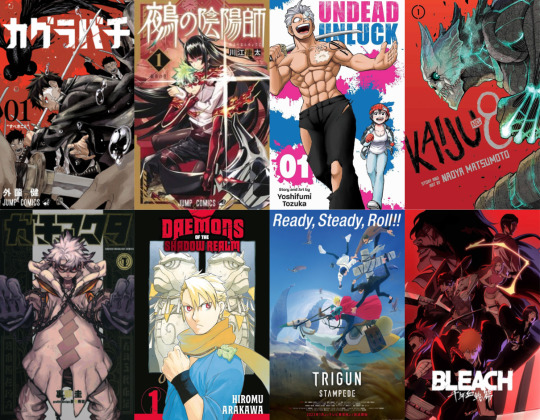
Background
Now let me get this out of the way, there is bias in these observations as I am a western anime fan, but also a North American anime fan. Meaning my gateway and gauges of pop culture are mostly determined by the history of my area of the world’s relationship with anime. From the OVAs of 80s hyper violent and hyper sexual sci fi that you had to purchase from the backs of video rental stores, to the Toonami era of 90s and early 00s programming block the centred around action anime and cartoons, the 4kids era of mass market japanese animated kids shows that were really just giant commercials with some of the earliest memetics in western sphere, and the explosion of shonen battle series in the western sphere in the mid to late 2000s marked by the rise of the colloquially named “Big 3” of shonen jump. I understand that continents like South America or Europe may have undergone a different exposure to the Japanese medium, but as I am going in with some bias in this observation, I would like to make it clear on where the formula is coming from. I also would like to lay down a certain clarification before making this, when discussing the topic of nostalgia I think a lot of people have forgotten what it actually means. If we go by the Cambridge dictionary definition, Nostalgia is “a feeling of pleasure and also slight sadness when you think about things that happened in the past.” This is often invoked when talking about pop culture because people from say 20 years ago don’t seem to enjoy or relate to the interests of today. The belief is that nostalgia is generational ergo if you grew up in the 80s you’re likely wishing to recapture the feelings of childhood that you associate with those trends from 20 years ago. In fact, most revaluation in media has often been catalyzed by a difference of those who grew up in an era rebuffing the opinions of those who didn’t.
There is the well known “20 Year Rule” regarding pop culture nostalgia. That every decade it longs for what was popular 20 years ago. Probably no better example than “That 70s show” being popular in the late 90s, the return of many beloved 80s-90s franchises like “Ghostbusters” returning in the 2010s as well as series like “Stranger Things” that wrapped itself up in 80s aesthetics. DC's New 52 relaunch that seemed to bring back trends from 90s era comics.
Now it goes without saying that the 20 year rule isn’t a “real” rule, rather an observation that certain trends make a return to popularity because the ones who grew up with a certain media will be the ones who add to the discourse when they come of age and will be the ones having a chance to create consumable art for the masses and that may just be revivals of once popular IP. This isn’t necessarily wrong in regards to nostalgia, but I do believe that one doesn’t need to have been born in a certain era to be nostalgic for something when we discuss pop culture. Pop culture is really just trends and preferences that become en vogue and people can acquire a taste at any given time. Sometimes it can be due to those who grew up with something now having the chance to create and drawing upon their own childhoods, sometimes it's just due to not being exposed, other times it can be a certain feeling of disillusionment of the now, and seeking something that peaks your interest, and even sometimes it can be major corporations or networks looking for things with existing audiences to draw upon that actually expand the audience. In fact one of the most prominent Netflix adaptations of the 2020s has been live Action Avatar the Last Airbender and One Piece, both shows that got their start on American televisions in 2004 and 2005. One of the biggest animated shows right now is Invincible, based on a comic book from 2003
So I want to stress this is not necessarily about how if you grew up with the original Mobile Suit Gundam show you are being replaced by the kids who were watching GetBackers. And or if you are a fan of shows that came out in the 2000s you yourself were born in the 2000s.
But what was the landscape of the English speaking anime community like back in the 2000s? Well let me paint a portrait for you.
What was the 2000s like for anime fans?
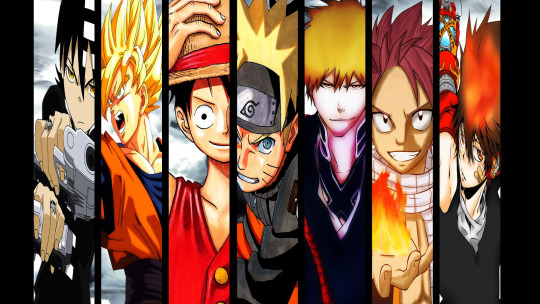
The term I used, “shonen boom period”, is somewhat mythologized in the western anime sphere. There was a glut of high profile shonen anime running around the same time that most people identified with this time period and was arguably when we saw the most influx of people getting into the hobby. One Piece, Naruto, and Bleach served as big series known for their massively large casts, MCs with a level of attitude, some of the most hype centric power supernatural/extraordinary power systems, and certain brand of “Japanese-y” humor. We can’t deny that it wasn’t just these series however, as series like Fullmetal Alchemist became many people’s introduction to more narratively intricate series interspersed with a somewhat gothic action style. The gothic and somewhat edgy Death Note became many fans' first ever “battle series that’s not a battle series” that also incorporated many biblical and gothic horror elements into its presentation. And things like Code Geass also incorporated this combination of hyper stylized cat and mouse with ornate and gothic aesthetics and fighting robots.
Series like Ouran Highschool Host Club and and Haruhi Suzumiya were basically gateways to the more hyper extraordinary slice of life series that didn’t shy away from fanservice and loud comedy. With ecchi like Rosario + Vampire taking it to an even greater extreme. For people willing to go even deeper, series like Fairy Tail began to pop up and share a distinct similar flavor to series like One Piece and Naruto which arguably started the popular conception of it coming from the same magazine as the latter. That’s not also discounting the amount of holdovers from the 90s like Dragon Ball z, Trigun, and Yu Yu Hakusho, which also had an edge towards fantastical combat and comedic oriented series.
All of this is to generally illustrate the media diet of what an average anime fan was expected to have some level of access to. As this was far before the eras of Funimation or Hulu having online services. Not a homogenized spread by any means, and im certain plenty of readers could name more underground or smaller series like Mushishi or Elphen Lied, but generally the popular mainstream you could tell that there was a consistent theme of long form media with a very loud, very flashy, and very action oriented type of series. Which I think is fair to say had skewed some people’s perception. And while I cannot claim with utter certainty that Japan was the same in this regard, you can look at magazines like Shonen Jump and notice a somewhat synchronistic trend. With series like Hitman Reborn, Gintama, D. Gray Man, Eyeshield 21, Bobobobo, etc.making a clear marcation of what was commercially successful at the time. Even series not inside the magazine but had smaller nicher, Tokyo-pop-esque series like Rave Master, Flame of Recca, Air Gear, History’s Strongest Disciple Kenichi, Soul Eater, etc all had a similarity to the shonen jump magazine. To the point it was not uncommon to see so many jump characters in a collage and one from shonen sunday or shonen magazine in there as if this was all coming from the same place.
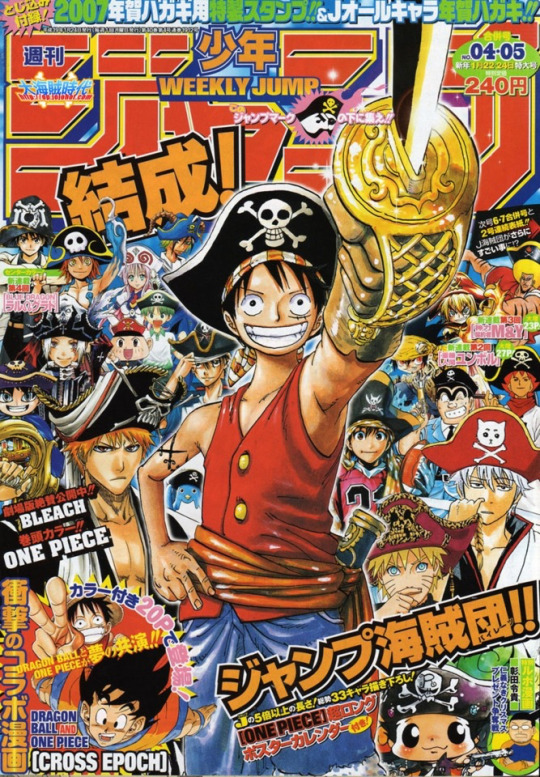
Changing Landscape
Now with the advantages of the modern internet, we have the ability to actually keep up with the jump magazine in real time as opposed to the common practice of relying on scanlation site and fansubs that were often devoted to the most popular works. But with simultaneous publication and services like Crunchyroll, being able to access a wider variety of shows and series that we may or may not have access to. I believe that the 2010s in the english speaking fanbase was the decade we saw a somewhat expansionism of what people perceived as anime. Anime could be One Piece and Naruto, but it could also be Erased, it could be the Promised Neverland, Attack on Titan, K-On, Haikuu, and Durarara. With the representatives of the 90s no longer being holdovers in syndication like dragon ball but rather full on revivals of the likes of Jojo’s Bizarre Adventure and Hunter x Hunter.

All of these could be "shonen" but also other genres like Seinin, Josei, and Shojo all had their own varying layers of what they could be in their demographic
The mood of what was popular was also changing, not just in the fact that more flavors of anime and manga were becoming mainstream, but new works from shonen jump showed a rise in almost subversive series like My Hero Academia and Demon Slayer that seemed to consciously deviate or place new spins from traditional tropes of the 2000s characters, and we saw works that were derivative of previous serious like Black Clover drawing upon Naruto the same way it was known that Naruto had drawn upon Dragon Ball before them. Series like The Promised Neverland and Doctor Stone offered up more dramatic series that still infused a certain energy of the shonen genre.
And of course the series like Attack Titan whose much more darker and gorey storytelling seemed to have become one of if not the biggest hit of the generation with a well regarded adaptation, but something that had felt so removed from what were once contemporaries like the then ending Bleach or Naruto. We can also note that the late 2010s saw the rise of series like Chainsaw Man and Jujutsu Kaisen that began a trend of popular urban fantasy stories. Where fantastical concepts were now in contemporary Japan and the stories that focused on concepts like self identity and the harshness of maturing were juxtaposed to the real world inhabited by monsters.
It seemed many tropes of the previous decade were still alive in the rise of Isekai anime. Which was particularly the only popular outlet for fantasy stories with an action orientation. But these almost felt disconnected from the wider world of manga as things like heavy harem action series had actually decreased in mags like shonen jump. There was also new tropes being established in this subgenre that became unique popularizations of tropes all on their own, such as the overpowered protagonist whose power everyone believes is weak. But many of these were based on light novels, a form of media that only in the last few years western readers are having official access to and not simply scans found on the internet.
We in North America truly have gone from anime being a niche that was primarily accessible through dedicated TV blocks like Toonami, to a full blown cultural relevance shift.
We also need to talk about this era in its perception of the past also shifted. The 90s and the early 00s often blend together as classics of the anime community. Somewhat encased in amber. However, there is no denying that “feels like a 2000s series” had become a bit of a shorthand for very goofy, Very horny, very action heavy series. Series like Fire Force and and Undead Unluck had their show what more problematic elements be equated to the problematic trends of the past that people just accepted as “a part of the medium.” But lets keep in mind, this is not really describing a time, more a trend. Superficial elements that invoke similar feelings of the past.
Speaking of anime fans…
Fan Culture
So while I wanted to paint a picture of creatively the landscape has changed, there’s no denying that in the age of internet accessibility, the anime fan community has also changed. It is much much easier now to get in contact with people who are anime fans now than it was to rely on word of mouth like it was back in the day. I can still distinctly remember my anime club which wasn’t even really a club devoted to anime but rather other geek stuff like D&D and TCGs. Our hobbies just happened to have similar overlap.
Now though, anime fan culture is much more relevant and thriving. Going from just posting weekly reviews, to long retrospectives, comedy videos, abridged series, clickbait articles, fan theories, and podcasts. However, I think a defining feature of fans of the 2000s era of anime that were at their most prominent was hype culture.
Due to many of the biggest anime series at the time being released weekly and focusing on action, many many many discussion boards and videos were often about staying in this cycle of wanting to see what happens next and the action made people very excited to see just how characters were going to win fights or even if they’d have fights at all.
I want to make it clear that this type of activity doesn’t belong to a certain era, but you can see it shaped by the 2000s era. Especially when discussing “what is the next big 3.” As if it were a true position and title, rather than a moment in time where there were just three very distinct shonen series in the fanbase.This doesn’t necessarily have a “negative” effect on the discussion of anime/manga but you can see that certain genres lend themselves to hyping fans up more and more.
Someone isn’t reading the most recent chapter of a romance like Blue Box with the same level of anticipation of who will face who like it was One Piece. But there have certainly been series that try.
The Present
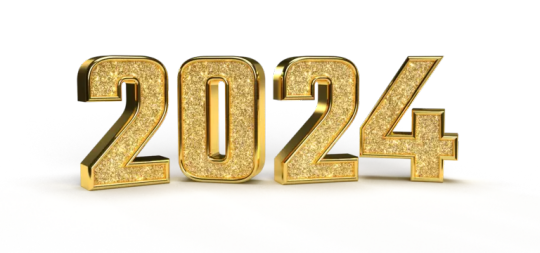
Now we reach the 2020s and this decade is still young, so it is hard to say what the future will hold for certainty, but we can look at the last four years and notice some significant waves being made recently in Shonen Jump alone. I already spoke of Undead Unluck, a series that almost wears it would now be considered retro inspirations on its sleeve. With an opening chapter that establishes an MC that seems motivated by a sexual joke, A power system follows a verbal naming gimmick, and a loose enough world that allows for characters of varying aesthetics and to be incorporated into groups. With groups of these powerful characters splitting up to face each other and use their ridiculous power to the extreme. Even in the series' own meta arc about creating manga, the in-universe analogy for Undead Unluck’s manga is commented on as feeling retro. There is no doubt the biggest viral hit of the decade so far has gone to Kagurabachi, a manga about sword fighting and magical crime lords that seems almost indulgent in its stylistic slicing and or dicing of baddies. Its memetic success was primarily due to a somewhat sincere and somewhat ironic belief that it would be the “next big thing” as it promised to be a stylized action series. Another surprise viral success has been the manga Nue’s Exorcist which sees another supernatural swordfighter boy harness the powers of his sexy spirit lady while getting into harem shenanigans that echo a particular form of ecchi of anime’s past that had actually been somewhat absent in the past decade in jump. Both of these series have a somewhat noticeable similarities to Bleach, a long running shonen action series that has seen its own revival in the last few years of writing this with the long awaited adaptation of the final arc of the bleach anime.
While the other members of the “big 3” never truly went away and became almost inter-generational, Bleach truly did feel like a “come back” as it was absent for so long. And unlike Hunter x Hunter and Jojo which were never really popular in the west and even their older anime are more regarded as anime deep lore. Bleach was one of the most popular series in the west at the time to never receive a conclusion animated.
Speaking of anime of the 2000s Trigun Stampede was a reimagining of the original late 90s show. This errs a bit similar to Hunter x Hunter’s style of revival, but also seems uniquely its own in actually trying to find a balance between the original series but adding in things cut from its original late 90s early 2000s counterpart.
And now we must examine other shonen magazines. Series like Gachiakuta created by a former assistant of Okubo, the creator of Soul Eater, carries with it much of the similar energies of that series. Its also noticeable as being a truly dark fantasy series. Not an urban fantasy, but rather a completely new world that had a very grunge and dirty world building. And then there is Daemons of the Shadow Realm, a series by Fullmetal Alchemist creator Hiromu Arakawa. This series is also set in modern day japan with supernatural elements, however Arakawa’s style of writing is practically unchanged from her time on FMA. With an emphasis on action, intricate mysteries, and character building comedy with her trademark over exaggerated blocky style. There is of course Hiro Mashima who has started another new series, Dead Rock, and his style has also not changed that much. Then there is just flat out sequels to 2000s series like Gamaran Shura.
This to me shows that we are seeing a bit of a combination of people who are now entering the workforce inspired by creators of the past, but also that creators of the past still exist 20 years later and are still making content that hasn’t really undergone significant change.
Of course, we can’t also forget the implementation of the Manga Plus/J plus service which has opened up a very interesting ground for creators to have some of the most creatively out there series than what you may have expected from the shonen jump brand. I genuinely don’t think series like Make the Exorcist Fall in Love or Fire Punch would’ve ever been acceptable in the pages of a weekly shonen series. However one series in particular does feel like it could've and boy its been quite the success. Kaiju no 8.
Kaiju no 8 almost feels as though it is the AoT of a new generation with the amount of anticipation this one series has as well as the similarities between the series superficial elements. However, I'd say the key distinction between the two has been the tone. AoT took a dark and practically dour tone on its titan infested world. With an MC declaring war on all of his enemies. The pain was realistic, with human bodies being brittle and vulnerable. And the belief that just because you were a good person you weren't going to make it out alive. Kaiju no 8 instead opts for a more action oriented tone. Down playing the bleak realism for more "Hell yeah!" moments. With super science weapons that feel more akin to a tokusatsu show and fights and battles between humans an kanji the feel like the Dragon Ball style wrestling matches of old.
And of course, that’s not to say Jump hasn’t continued with series that feel more modern like the realistic and mellow romance of Blue Box or the dramatic coming of age story of Akane-Banashi.
But the presence of these series has caused somewhat of a friction with the popular conception of the magazine. Its safe to say that while “shonen” tends to think of action male oriented series, it can really just mean works aimed more at adolescents. But I think many tend to associate this familiar feeling of “what is shonen” with their popular introduction of the magazine. With a saturation of action and brash comedy series. This is further complicated by the fact many action series in jump are actually ending over the last decade. With new ones not popping up to replace them as frequently and series like One Piece and MHA and Black Clover basically stretching out across an entire decade or longer. In fact, I don’t think it's unreasonable to believe that the hype for something like Kagurabachi was in part a belief that it signaled a return of a type of familiar series and genre that had been missing. Or at the very least, looked to fill an inevitable gap the magazine was obviously going to be facing. Followed by the other commercial success of Nue’s Exorcist, we are likely to see these series last for a long time. At the time of this writing, Tokyo Revenger’s author Ken Wakui has released Astro Royale, a series that feels very similar to his previous work yet infused with this almost GetBackers flavor.
So that leaves us with the question at the start, are we seeing a rise in 2000s nostalgia in anime and manga?
Conclusion
So I'm sorry if I disappoint, but the best I can say is, I’m not certain. I do believe that from my observation I think it is reasonable to say that we are seeing a rise in creators in the shonen space being ones inspired by series from 20 years ago. However, I think we are also seeing creators who are from that time period also returning to write how they have always written.
On the consumer side, I think we can see that fans of anime and manga have changed in the sense their tastes can now be shaped by a much larger catalog of series at their disposal. But in the case of shonen, I think we are simply seeing those who likely got their start in anime at around the 2000s resonating with newer series drawing upon those series, but also with younger fans now likely to grow up with the tail end of what was popular in the 2010s now being influenced by the 2020s. I also believe that one of the defining features of the anime community in the last decade is hype culture. And currently we are seeing a rise in series that actually feel more catered to hype, be it a revival of a series they liked or predicting what will be the next success.
All and all, this piece was trying to tunnel on the shonen demographic in general, which is more likely than not going to have similar traits relative to itself. I do see us as a community endorsing trends of the past and there’s an excitement for these things to “come back” even if they may or may not have left. If you liked this please drop a like or reblog because I may do more of these think pieces in the future.
#anime#manga#think piece#discussion#shonen#shonen jump#kagurabachi#gachiakuta#nue's exorcist#undead unluck#kaiju no. 8#bleach#one piece#naruto#yomi no tsugai#attack on titan
121 notes
·
View notes
Text
So there's something we really need to talk about, generally as a collective, but especially in nerd/fandom spaces. And that's the collateral damage that comes with hyper-policing of "objectionable" content that will inexorably roll into fascism. Strap in, this is that kind of Tumblr post.
If you look at the of ideology of generations throughout the twentieth century, there's a pattern: each new gen is going to swing opposite of their parents. 50's patriotism, 60's and 70's hippies, 80's Reagan era America, 90's 3rd wave feminism, 00's ultra patriotism, you get the idea. So to some extent, it's not that surprising that Gen Z is starting to lean conservative. But as someone who's been in fandom spaces for well over two decades now, believe me when I tell you that the pendulum has swung so far right that--given the current political climate in America (and to some extent globally)--this is a microcosm of a much bigger issue.
Back in the 2010's, the internet was starting to grow its roots. The truly experimental days of random websites, chat sites, strange niche forums, etc, had started to congeal into a handful of massive platforms. Facebook was taking off. YouTube was past its baby stage and into its adolescence. There was a fragile stability that allowed for growth and expression in art. Particularly in fandom culture. We as a generation were growing with this new, amazing technology. And humans, when curious, like to stretch their limits. Fandom and geek spaces stretched wide, from insanely ambitious fancomics to the dredges of FF.net. And a not insignificant part of this new community was diving into the dark and the taboo.
Artists and writers wanted to explore all elements of humanity. Because, plainly, we weren't allowed to experiment with mass media. And so we made our own. Queer kids explored identity and sexuality, trauma survivors craved catharsis. Growing brains tapped into the dark and depraved if only to see where it led them. It was a playground. It wasn't always safe, and it wasn't always productive. Sometimes it was just porn for porn's sake. But that in and of itself was not a moral judgment. Sure, you'd absolutely get side-eyes if you proudly boasted that your favorite anime OVA was Boku no Pico, but most people would laugh it off at a convention and then head out to their next panel.
What I'm saying is, ten, fifteen years ago, there was a sense of understanding that the dark, sexual things in fandom spaces were just another facet of the culture. This is not to say that truly disturbing media and criticism of it did not exist. Hell, when Twilight debuted, I was one of the first of my high school to criticize the abusive relationships for what they were. The ability to criticize, to analyze and reflect on what makes something "good" or "bad" is a healthy mechanism to have. And those who did not want to engage with material that they found disturbing or uncomfortable simply didn't have to engage with it. It's why AO3 has tags. It's why Tumblr has a block or mute tag function.
But what we're seeing now is so far beyond the healthy critiquing of distasteful art. More and more now I've been seeing well meaning, liberal presenting voices equate real harm to distasteful material found in books, movies, TV shows, you name it. That is not to say that things like racial stereotypes or romanticised abuse does not have real world implications. But it is one thing to point out that "hey, 50 Shades of Gray is an unrealistic depiction of a BDSM lifestyle and if you try these things you'll likely get hurt" and "seeing characters on screen have sex violates my consent as a viewer." (that is a real argument I have seen online)
There is a hyper moral slant to this kind of thinking. The same line of thought that immediately equates "a character does a bad thing" to "the author must condone this bad thing." I have always said that we do not have a lack of media literacy, but an uptick in a reaction based economy. That reacting to a controversial thing without first digesting the thing you're reacting to gets good views and feeds the algo, so the conversation then becomes a shouting match between people that haven't even seen the damn thing. This is how you get people coming away with "Steven Universe is a show that supports genocide" with their full chest.
The push to have blatant censorship in fandom is upsetting for a good number of reasons. It's discouraging to younger creatives who want to play in those spaces for their own reasons, and it feeds into a frenzy of paranoia. Because at a certain point, it no longer becomes about the art, but whether or not you, with your Right Opinion, is the first on the dogpile.
So what does this have to do with fascism? A whole hell of a lot.
One of the first targets in a fascist regime is art. It's expression, it's creativity. Why? Because creativity is often the best vehicle (sometimes the only vehicle) to criticize the people in power. Why do you think gigantic corporations are trying to push AI art on us so bad? Because art makes us human, and humans like to point out when Shit Is Going Bad. So if you take the human out of the art, you can trick people who aren't looking too closely into being compliant.
The recent hyper-policing of fandom spaces is a tool of fascism. This is not hyperbole, nor hypothetical. It is the reality of how fascism lives and breathes. If you can convince a population to weed out the "bad" art on their own volition, weeding out the rest on your own is a piece of cake.
Before anyone puts words in my mouth, I am not talking about child abuse content, content surrounding victims of trafficking, revenge porn, or anything that brings actual physical or psychological harm to another person. With that being said, policing sexual content in fandom leads to policing any kind of intimate content at all. And as so often is the case, queer content is often lumped in with the former, despite the fact that identity and gender has nothing to do with sexuality. And that sexuality itself is a part of the human experience, and its rejection of its imitation in art is a rejection of that humanity. It's the dominos that lead into history being flat out erased. Once all the nasty sexual content is dead and gone, they'll push further. What conflict, what subject matters, are obscene? Coming of age stories? Slice of life stories? Epic fantasies, scifi, non fiction? Perhaps all of them. You can't be too careful. The heart and soul of stories, art, poetry, expression, all of it is subject to the whims of an oligarchy that frankly doesn't care if you have food in your fridge. If you speak up, speak out, put your foot down, you too are subject to those same whims. And it is so much easier to make sure you shut up forever than to be diplomatic.
We are facing a dictatorship here in America. We are going to be looked in the eye and told that we do not matter. That the best thing for us to do is to stay in line and be thankful for the stale bread on our plate. The last thing you should be doing right now is trying to speed up the process.
17 notes
·
View notes
Note
what's please save my earth about? I keep seeing you talk abt it and I'm like 👀
"Please save my Earth" tells the story of a pack of highschoolers and a 7year old boy, who thanks to their connected dreams find out they have been living as alien researchers, studying and watching over the earth from their base on the moon in their past life. They have been reincarnated as humans and have to come to terms with the complicated relationships they had in their past lives.
And oh boy it gets interesting.
Note that the aliens I'm talking about are basically some sort of humans but upgraded. They just come from different planets apparently and have powers like communicating with plants or straight up ESP. And small spoiler but for some of them their powers activate again during the series when they're human.
The original manga by Saki Hiwatari was published in the 80s and 90s and the 6-episode OVA came out in 1995. You can watch it on YouTube although I wish I had access to a better quality of it. Personally I think the anime adaptation left some things kind of unsolved, there are implications to what happened but no deep dive into it, which is why I started reading the manga! Hopefully I'll find out more about what didn't make it on screen. So far I really like it, it's been a while since I've read shoujo, it has some humour in it and apparently it starts getting more serious and dark later on.
If you saw me posting about Jinpachi and Issei - they're kind of a subplot, the main character is Alice (Arisu) and Rin, the 7 year old menace. Their relationship is complicated and takes various turns.
Lastly for possible content warnings: there is an age gap relationship in please save my earth. It is also complicated but nothing too... shocking (??) for someone who isn't used to seeing stuff like that talked about in media. It's very tame if you ask me, you'd need to find out yourself orz
Anyways! I think I can recommend giving it a shot, it's really short but the artstyle of the anime is so ahh delicious, the characters feel so solid and shaped, I love that. And the animation is very nice as well!
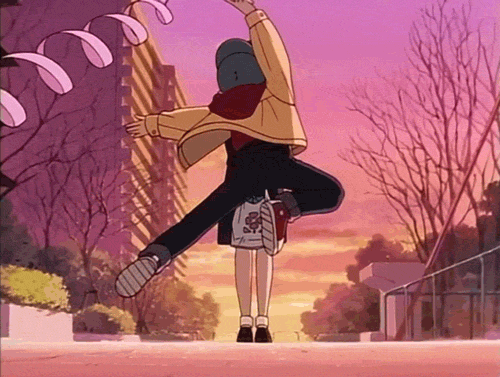
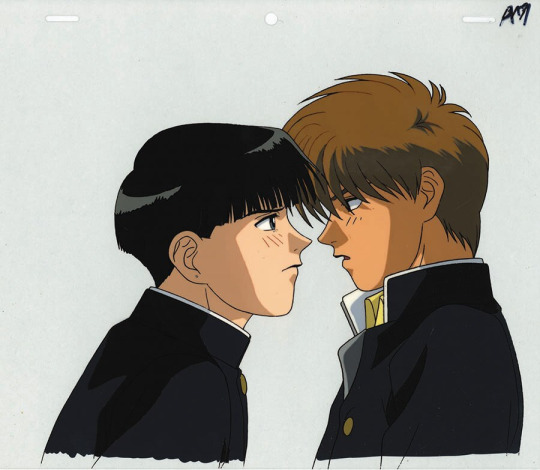
(x), (x)
#I just need to find it in better quality than on youtube....#please save my earth#answered#ah also shoutout to this artist who draws lot's of gorgeous fanart for this series on pixiv - MBM (27035001)#I wish I could repost some of their art here.. or maybe find them somewhere else? :3#I could post my own psme to pixiv maybe...
72 notes
·
View notes
Text
An Abbreviated History of Mecha Part 4.1: THE EAST IS BURNING RED!!! (1990-1995)

(Read in the voices of Yosuke Akimoto and Tomokazu Seki) ANSWER ME, DOMON! THE SCHOOL OF THE UNDEFEATED OF THE EAST!!
THE WIND OF KINGS!!
ZENSHIN!!
KEIRETSU!!
TEMPA KYOURAN!!!
LOOK, THE EAST IS BURNING RED!!!
Welcome back to An Abbreviated History of Mecha! Last time, we saw the proliferation of mecha shows throughout the 80's. We also saw the introduction of an incomplete list of influential industry people who got their start in the 80's. In the 90's, we will begin to see a continuation of this proliferation of mecha works throughout the decade. The 90's will also see a lot of the stories I have talked about pay off, as
What we will also see in the 90's are a few major events that will affect the world of mecha in pretty major ways. The first is the bursting of the Japanese economic bubble, which would cause the Japanese economy to go from an era of excess to one of stagnation known as the Lost Decade. Another is the sudden arrival of a third honorary mecha series, except this honorary mecha series would arguably help to kickstart the slow decline of mecha stories. It should be noted that this series is not the only reason for the slow decline of mecha shows. That is a whole conversation in and of itself, and one that, maybe one day, I will talk about.
The last thing that should be noted about the 90's is that this would also see the creation of a handful of networks in the US that would help to bring anime over to the west, namely one Cartoon Network (and more importantly, its spinoff networks Toonami and [adult swim]) for the people in the US. While anime had seen some popularity in the west thanks to shows and movies like Robotech, Voltron, Ghost in the Shell, and Akira, it would be the four-part knockout of two of the series mentioned here alongside animanga juggernauts Dragon Ball Z and Sailor Moon that would cause anime to become mainstream.
That should be everything. With all of that out of the way...
Gundam Fight!
READY?! GO!!!
Yuusha Exkaiser/Brave Exkaiser (1991)

Starting us off in 1991, Takara would realize that, due to the sudden success of Transformers in the US, it might be time to diversify as Transformers had no longer felt like it was truly their property anymore. As such, they would create the Yuusha line, with their debut series being Brave Exkaiser. Exkaiser would prove to be a massive hit amongst its intended younger audience and would kickstart a whole franchise, which would also include:
The Brave Fighter of Legend Da-Garn (1992)
The Brave Express Might Gaine (1993)
The Brave Police J-Decker (1994)
The Brave of Gold Goldran (1995)
Brave Command Dagwon (1996)
The King of Braves, GaoGaiGar (1997), which I will talk about next time.
The Brave franchise is important due to how often this series gets referenced by other works, with the usual reference points being either Might Gaine or GaoGaiGar. More importantly, both Brave Exkaiser and the Giant Robo OVA would usher in an era of works that looked to the older mecha shows like Tetsujin 28, Mazinger Z, and Getter Robo for inspiration as opposed to Mobile Suit Gundam.
Super Robot Wars (1991) & Another Century's Episode (2003)

1991 would also see the start of Banpresto's Super Robot Wars, the ultimate crossover of in terms of mecha works. Super Robot Wars is where a lot of mecha-related terminology such as Super Robots, Real Robots, and the Holy Trinity (Mazinger Z, Getter Robo, Gundam 0079) come from. Super Robot Wars would also introduce its own set of original robot designs, each with their own unique pilots. Super Robot Wars would eventually gain a sister series in the form of 2003's Another Century's Episode.
One of the most important factors of Super Robot Wars is that, due to its celebratory (some might even say masturbatory) nature, these games can serve as a good metric behind what is a mecha story.
Giant Robo the Animation: The Day the Earth Stood Still (1992)

In 1992, Yasuhiro Imagawa and company would release the first episode of the now-legendary OVA Giant Robo the Animation: The Day the Earth Stood Still. This OVA, along with Brave Exkaiser, would begin the push for giant robot shows to take inspiration from works that were not Mobile Suit Gundam. The Giant Robo OVA, on top of being one of Imagawa's magnum opera (fun fact: the plural of magnum opus is magnum opera) alongside Mobile Fighter G Gundam, would also be the direct inspiration for western darling The Big O.
Kyoryu Sentai Zyuranger (1992) & Mighty Morphin' Power Rangers (1993)

If you're wondering why I mentioned Super Sentai in part 2, this series is why.
In 1992, the Super Sentai series Kyoryu Sentai Zyuranger would release in Japan. While, to my understanding, it was about as popular as the rest of the Super Sentai franchise, this specific series in particular would attract the attention of one Haim Saban. With some editing here and there, along with filming new segments featuring an American cast as opposed to using the original footage featuring the original Japanese cast, Saban and company would create Mighty Morphin' Power Rangers, which would air for the first time in 1993. Mighty Morphin' Power Rangers would go down in history as one of many series that would help pave the way for animanga to gain a foothold in western media.
Denkou Choujin Gridman/Gridman the Hyper Agent (1993) & Superhuman Samurai Syber Squad (1994)

1993 would also see the legendary Tsuburaya Productions, after a long period of struggles, finally make a comeback with their new series Gridman the Hyper Agent. With its smaller budget, the Hero of Dreams would come to be known as the hero who would help Tsuburaya Productions come back to relevance in the 90's.
Due to the success of Mighty Morphin' Power Rangers, other US companies would want in on the action. DiC Entertainment would buy the US distribution rights for Gridman and would try to put their own spin on Power Rangers by creating Superhuman Samurai Syber Squad.
Eventually, the people at Studio Trigger, who were interested in making an anime based off of Ultraman, would reach out to Tsuburaya Productions in an attempt to get permission to do so. While their initial request for Ultraman specifically was shot down, they were allowed to choose any of Tsuburaya's other properties for their anime adaptation. And they would choose Gridman for their subject, which would lead to the creation of SSSS.Gridman (a show I will talk about later).
If you have time to spare, you should also check out Cheese GX's video on the history behind Gridman.
Patlabor 2 (1993)

The fan-beloved Patlabor 2 would also release in 1993. Reflecting the realities of post-economic bubble Japan and the ensuing Lost Decade, Patlabor 2 would trade out the optimism commonly associated with the franchise with a much more cynical and grounded (even by Patlabor standards) tone. People tend to view this movie as being what Patlabor is all about, but in my opinion, this movie is an anomaly that can only truly be appreciated by knowing the context of everything that came before it.
Magic Knight Rayearth (1993)

1993 would also see the publishing of the shoujo manga series Magic Knight Rayearth. Created by the legendary mangaka group CLAMP, Rayearth would be one of the first magical girl series to really escape the long shadow cast by one Sailor Moon (if I understand my magical girl history correctly, Sailor Moon is basically the magical girl equivalent of the original Mobile Suit Gundam). How was Magic Knight Rayearth able to do this?
By adding giant robots into the mix. That's right: Magic Knight Rayearth is most likely the reason why there is overlap between magical girl and mecha fans. While remembered by many as being an important series in the canons of mecha, magical girls, and CLAMP, Rayearth's legacy would largely be overshadowed by one Cardcaptor Sakura.
Mobile Fighter G Gundam (1994)
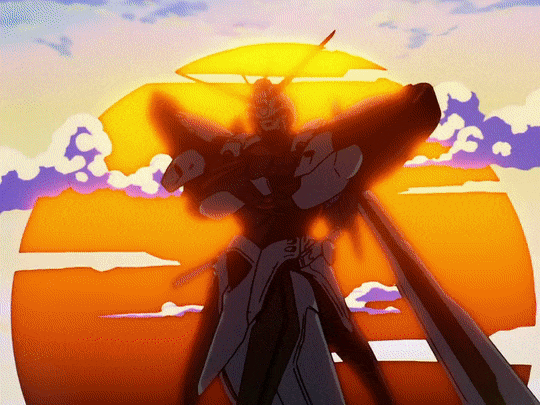
1994 would see Gundam return in a radically different form with the martial arts-inspired Mobile Fighter G Gundam. Often considered to be the other iconic series of Yasuhiro Imagawa, G Gundam would mark the beginning of a new era of Gundam by being the first alternate universe series to exist, thus allowing the franchise to flourish while letting the original Universal Century timeline continue to exist and get its own stories. Because of its radically different nature though, G Gundam is oftentimes looked down upon as a series that spits on the legacy of the Gundam franchise.
And again, not to toot my own horn here, but I also have a trilogy of posts all talking about G Gundam. All three posts seemed to be pretty popular relative to my other posts, so there seemed to be something in them that resonated with a lot of readers.
New Mobile Report Gundam Wing (1995) & New Mobile Report Gundam Wing: Endless Waltz (1996)

Following on from G Gundam is 1995's New Mobile Report Gundam Wing, which is arguably the most important Gundam series after the original and Gundam Seed in the 2000's. As a return to the war stories of the original Gundam, the reason why this series is important is because Gundam Wing would be one of the big four anime series that would make anime become mainstream in the West.
In my opinion though, Gundam Wing's legacy begins and ends with it being the first Gundam series to air in the West. In Japan, another series would air at around the same time as Gundam Wing, one that would loom over the rest of canon of mecha due to its impact on the anime industry and Japanese pop culture as a whole.
Neon Genesis Evangelion (1995) & The End of Evangelion (1996)

Ah yes, the original "Not Like the Other Girls" mecha anime.
The series that would hamper a lot of Gundam Wing's cultural impact would be Hideaki Anno and Studio Gainax's legendary Neon Genesis Evangelion, and the second of Gainax's Big Four alongside Gunbuster. Created as an homage to shows like Ultraman and Space Runaway Ideon, Evangelion would take the zeitgeist by storm, forcing its way into the pantheon of the mecha canon like... well, like an Evangelion Unit tearing through an Angel's AT Field. There was a certain je ne sais quois to the series that made it stick to a lot of viewers at the time, and a lot of the history and context behind this series' production would help shape a lot of its more cerebral moments.
Anno would eventually revisit this series in 2007 by remaking this anime series into a quartet of films known as the Rebuild of Evangelion series. At first just a project to bring Evangelion to the 21st century, the Rebuild films would eventually become the first of the Shin Japan Heroes Thematic Universe, which would come to also include:
Shin Godzilla (2016)
Shin Ultraman (2022)
Shin Kamen Rider (2023)
The problem with a series like Evangelion is that, while it is a culturally important series that deserves a lot of the attention and praise it gets, a lot of Evangelion fans tend to go a little bit too far. It's subversive nature tends to become exaggerated to the point where Evangelion is often treated as being subversive of mecha, and thus, not like the other mecha shows. This is, in large part, why the infamous idea of Evangelion being "Not like other mecha shows because it deals with character drama" comes from, and it's something that I'd like to talk about at some point in the future after all of this.
Conclusion
And there you have it! As we get into the latter half of the 90's, we will see a lot of iconic mecha shows begin to pop up. We will also see [adult swim] begin to really play its part in making anime more mainstream, along with Gundam begin to decline and the end of the Brave franchise. We'll also see the appearance of the crazy man known as Tetsuya Takahashi make his directorial debut in what is quiet possibly the single most ambitious JRPG project of all time along with a surprise appearance by... LEGO?!
Next time, Part 4.2: A Grand Glorious Gathering!!
This will be the key to victory.
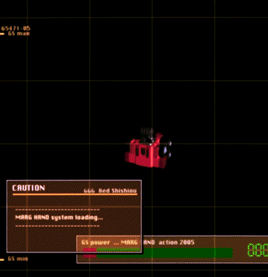
#anime and manga#mecha#mobile fighter g gundam#brave exkaiser#magic knight rayearth#giant robo ova#giant robo the day the earth stood still#patlabor#patlabor 2#power rangers#super robot wars#super robot taisen#new mobile report gundam wing#gridman the hyper agent#neon genesis evangelion#an abbreviated history of mecha#superhuman samurai syber squad#denkou choujin gridman#kyoryu sentai zyuranger
41 notes
·
View notes
Note
The old year is dead. Long live the new year. Tell us about some stuff you liked in 2024 (music, TV, movies, cool things you did, whatever!) and some stuff you're looking forward to in 2025
Happy new year! I continue to love yuri!! (and also... sonic the hedgehog... which has yuri in it now so really lucked out there)
2024 saw the end of one of my fav new(er) manga to come out recently, Monthly in the Garden with My Landlord! It really crept up on me for how much I've ended up liking it but dang, what a good ride! Sad to see it go but I'll defo keep up with the author's future works!
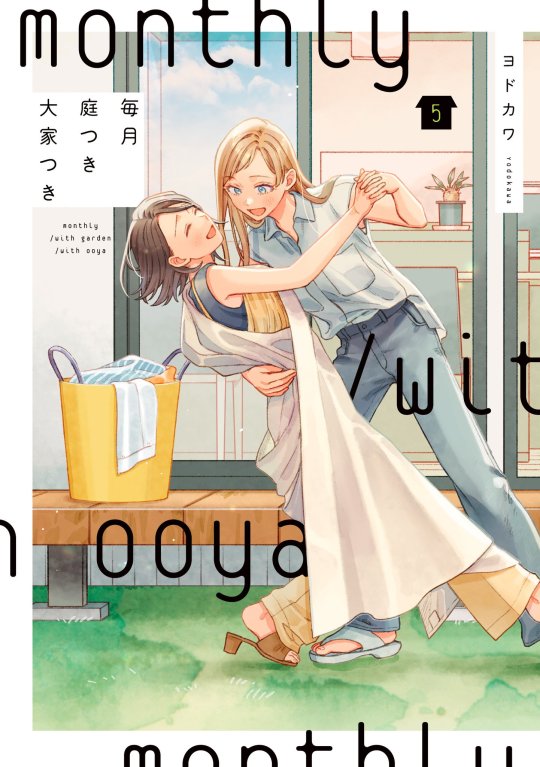

I've been doing a lot of catch up this year as there are plenty of longer running series' I just hadn't dug into, such as How Do We Relationship? Delicious in Dungeon and This Monster Wants to Eat Me.
Delicious in Dungeon is now so easily in my top 5 favorite manga of all time. Love the group dynamic, love the funniest morally grey elf Marcille Donato, love that its doesn't feel like it drags or goes too quick within its 14 volumes, just love it!! Also wild to see so much Farcille merch in the artist alley this year, it felt like every other table had something and I can't really think of another f/f pairing that's hit that level within the con circuit merch scene. It was a lovely to see!
On the more textual yuri side of thing: How Do We Relationship? Oh geez, of man, and what god damn read! It took me a few volumes to really get into it but the reveal that it's not “story about what happens after you start dating someone” but is actually “a story about what happens after you breakup with someone” is devastatingly good!
Rip to all the college yuri I'll read going forward because every one of them is going to be compared to HDWR, its set the new standard for me haha. It was so good I had to go and buy the whole thing in print as soon as I finished.
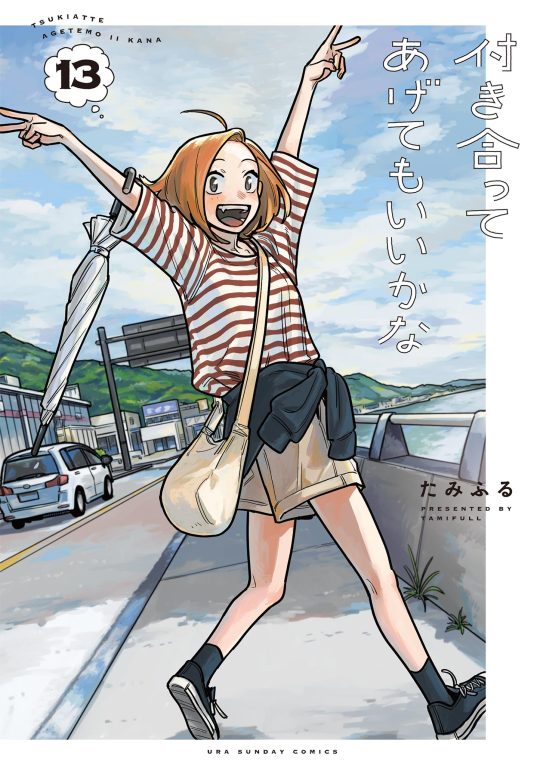
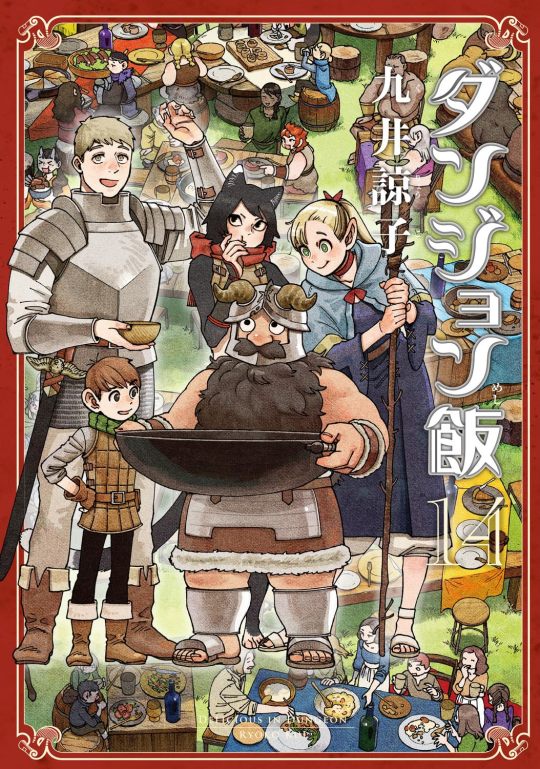
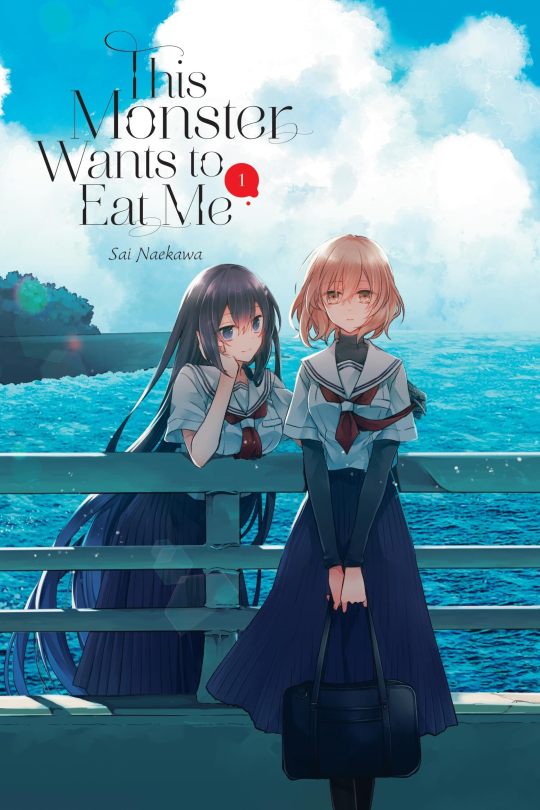
Speaking of which, this year I went back to buying manga in print and I'm really glad I committed to that! At first it was more a reaction to the waves of delisting we've seen but It was a lot of fun hunting down deals to populate the Yuri Tower. This corner of my room now legit makes me smile when I look at it, even if I'm going to have to work out how to fit more books on there soon.
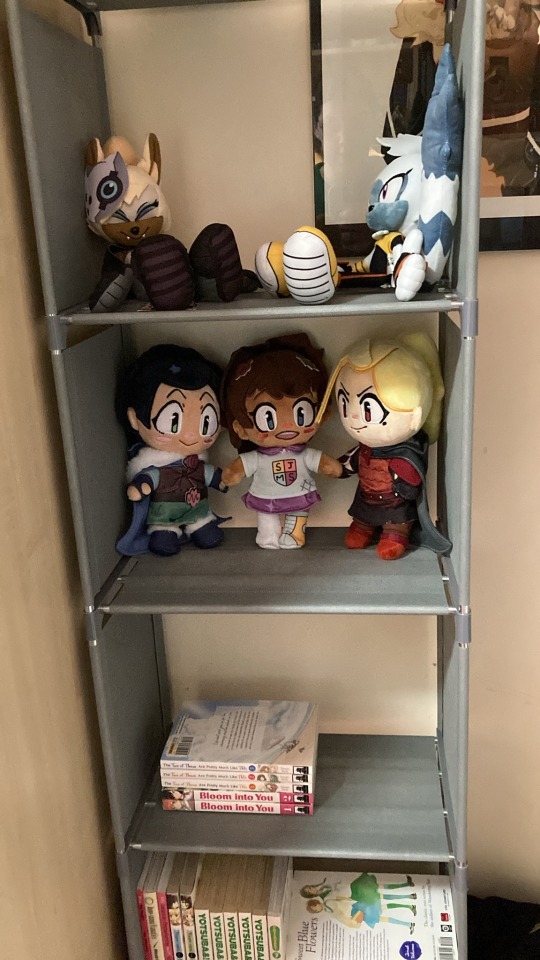
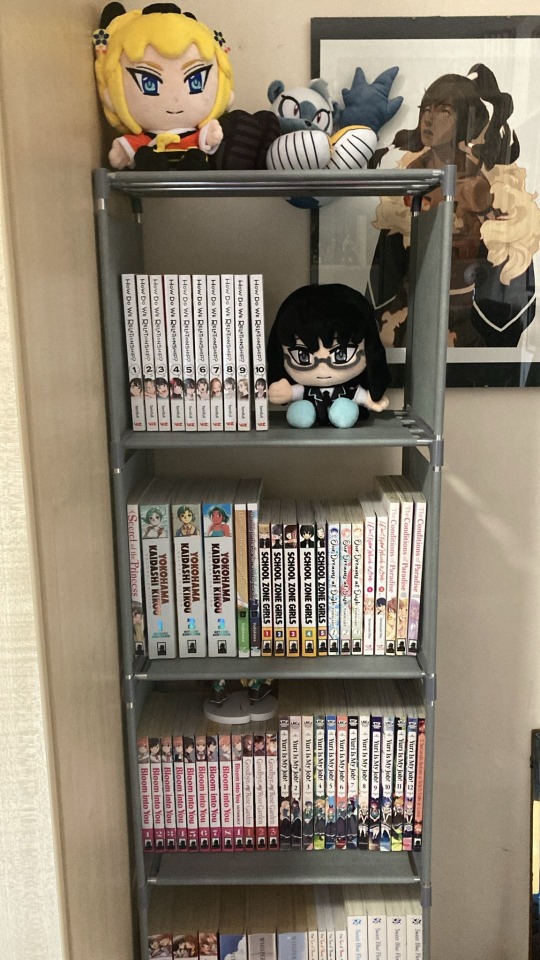
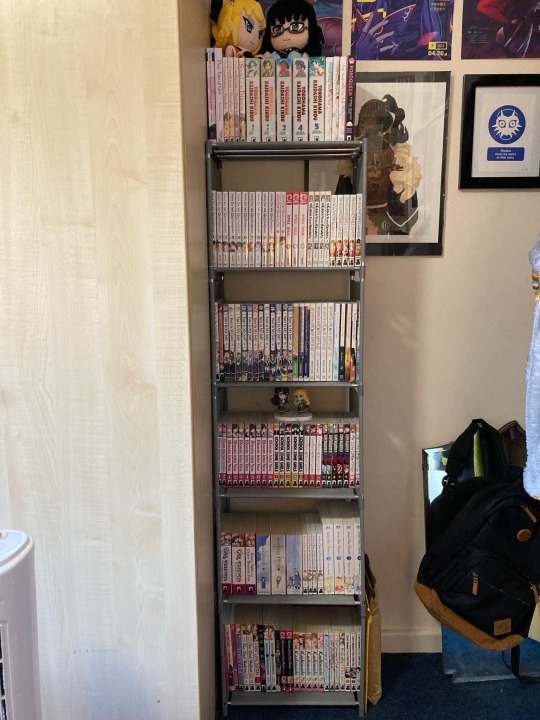
(if you're a UK book/comic/manga buyer than I rec scifier.com and worldofbooks.com, they have good prices and if you google for discount codes you can always grab one that's at least 5-10% off)
On the video game side of things I played an old SNES RPG called Eternal Filiana and was sooo charmed by it. The game is based on a 80s light novel that is very much influenced by Lady Oscar's popularity at the time, having its own protag also be a blonde haired women who was raised as a man for plot reasons.
The part that was most interesting to me though was that the André to Filena's Oscar ended up being a woman she marries within the first 30 mins of the game. Filena and Lila can be a bit goofy in the games (b-b-but we're both women??) but they still have some legit sweet moments and having watched the OVA first, which is tries to take itself more seriously, I now have a real fondness for the pair. Here's to the first married yuri couple!

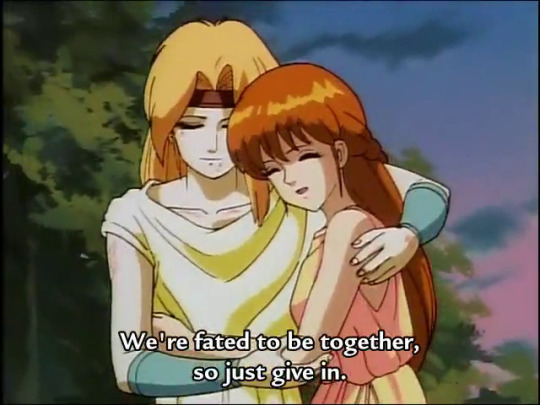
And finally... Sonic. It's been another good year for Sonic! The comics continue to be a fun read and I really liked Sonic X Shadow Generations despite being apathetic toward Shadow lol. He was good in it though and all his levels ripped! Great game! Third film also fun! Very excited by the characters who show up in the stinger :) I also got into making custom figure with my brother this year so that's been a fun hobby for us to do together.
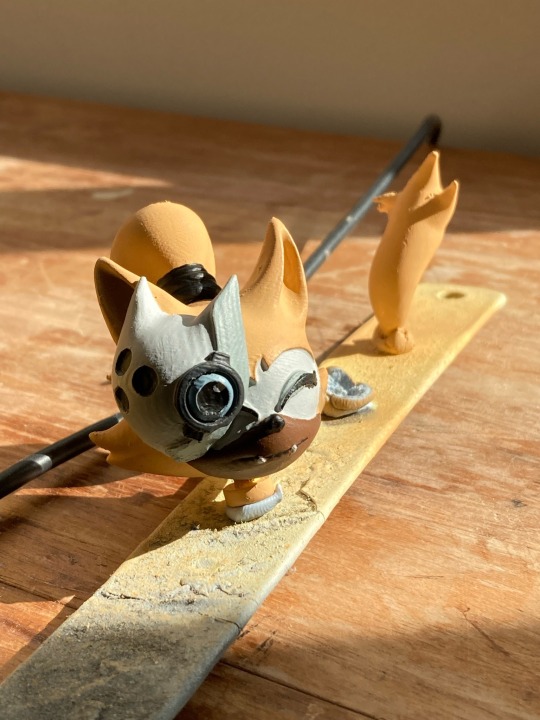

and that's it!! I mean there were other things I played and read, places I went to but whatever!! the post is long enough!!
For 2025 I'm looking forward to the anime of This Monster Want To Eat Me and suuuuper looking forward to The Moon on a Rainy Night! I need them to break the yuri anime of curse of having trash budgets though..... we cannot have another Whisper Me a Love Song situation..... AND WE WONT!! IM MANIFESTING GOOD THINGS!!
#manga musing#hurray yuri!#hurray sonic!#(hurray yuri in sonic? I hope we also see tangle and whisper in more things!)
12 notes
·
View notes
Text
⋆⭒˚。⋆✮ ⋆ ˚。𖦹 ⋆。°✩
𝓶𝓸𝓿𝓲𝓮 𝓷𝓲𝓰𝓱𝓽 !!
ft. the strawhats
masterlist
a/n: going to see ayesha erotica tonight, omg what if she signs my right tiddy
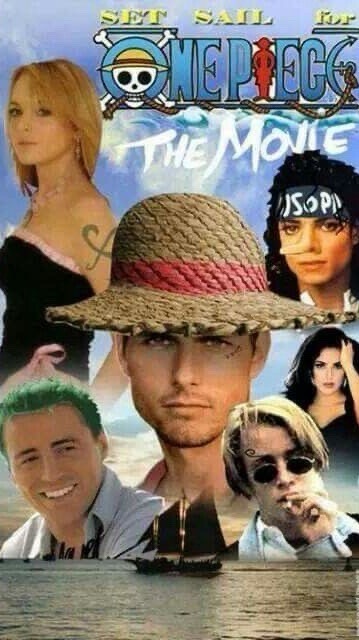
what movies do the straw hats like?
─── ⋆⋅ ♰ ⋅⋆ ───
18+ !! MINORS DNI
─── ⋆⋅ ♰ ⋅⋆ ───
cw: my headcanons, if u don’t agree that’s fine just writing them cause it’s silly, grammar lowk rn cause im crazy
tags ✮⋆˙ crack fic, i just randomly thought of this and immediately had to write it on docs lmao, if it’s ooc i lowk don’t care
luffy
not say saying this to infantalize lil bro but i see him unironically into how to train ur dragon and mostly likely watched it over 100x. but tbh, i don’t blame him bc the movies are lowk gas so.
i also see him getting riled up over king kong vs godzilla or just any action movies like marvel. oh and he would definitely headcanon the crew as different marvel characters for funsies.
probably kins brad pitt
zoro
you cannot fucking tell me bro doesn’t watch kill bill or any bruce lee movie.
definitely got scolded by nami when she found him recreating a scene from charlie’s angels.
idk i don’t got a lot to say about him bc i feel like bro’s just interests are self-explanatory. he definitely is against the whole romance sappy shit.
nami
my girl loves some cute ass rom-coms, i can feel it. she definitely eats up 13-going-on-30 or 10 things i hate about you.
oh, she eats up telenovelas…who cares if it’s in another language, if it involves love, angst, and death, she don’t care. on the wings of love~
definitely cried watching marley and me, cannot tell me otherwise
usopp
this man is watching the rom coms with nami. he unironically loves romance movies. sure, he’ll watch a few action movies but come on…bro was prolly watching the new sydney sweeney movie his bestie (nami).
nami will invite him to the library while the whole crew is asleep for silly sleepovers. they’ll put on a random rom com while gossiping and giving eachother spa days.
him and nami were holding eachother while sobbing after watching the ending to marley and me for the 10th time.
sanji
watches any movie that discusses the beauty of culinary art.
he definitely enjoyed watching the menu and became fascinated with the horror elements that complimented a “sophisticated work of art.” oh and prolly watched the american girl movie with olivia rodrigo as grace (cause she’s like a baker in the movie lmao).
*sigh* ok so like he prolly LOVES titanic and imagine rose as nami. prolly tried sneaking into usopp and nami’s sleepover but got his ass beat cause he wasn’t chill enough to come ova.
robin
ik she into them campy movies or horror but mostly psycho horror. in terms of camp, definitely the devil wears prada. for horror, she’d prolly like hereditary(?) (lemme sit on it ill prolly change it later) or she’ll like them classics and im not talking about just 80s classic, no, she prolly watching dracula before it had fucking sound.
franky
fucking top gun maverick. bro is the definition of a gen x mom. or prolly crying to a studio ghibli movie or the notebook(?) OR he can be cunty by watching legally blonde bc elle woods is SUPPERRR tbh i think bro’s taste would lowk be diverse.
chopper
mid joining usopp and nami’s sleep over and crying with them to marley and me. or he prolly watching zootopia and would be so amazed bc it’s an allegory for segregation
jinbe
watching that one lowk boring movie about stocks with christian bale. lowk fucks with that one princess diana movie with kristen stewart. yk what, fuck it, he prolly fucks with the godfather.
brook
some stupid ass movie from the 50s?? full on black and white shit. wait, ok, i did a film class and all i can remember was like vertigo which was lowk good and whats up doc.
#one piece#am i cooking#roronoa zoro#monkey d. luffy#usopp#god usopp#nami#vinsmoke sanji#franky#jinbe#nico robin#tony tony chopper#soul king brook#fanfic#crack fic
28 notes
·
View notes
Text
Metal Gear Fanfic - Thunder
Hal discovers another metal gear leak, in perhaps the most obvious of places. A very stupid fic with a very stupid joke. Ao3 Link! @tarisbackyard made a joke about this months ago and I knew then I needed to write a silly lil ficlet of it, lol.
---------
The frantic clicking of Hal's laptop mouse and absence of any other active sound was what alerted Snake to the fact that something was amiss.
Typically, even when deeply engrossed in work, a flurry of sound tended to accompany Hal's computer activity. He usually listened to something, background noise to help him focus in the form of some 80s city pop or an episode of a mecha OVA, rarely actually paid attention to. When Snake was doing something in the same room, he'd wear headphones, but when he was alone, he didn't bother.
So when Snake walked out of the bathroom, fresh from a shower and toweling off his hair, it immediately set off alarm bells to find such relative silence, doubly so as he walked into the living room to find Hal sitting cross-legged on the couch, hunched over his laptop like a shrimp in near-complete silence, save for the sounds of his own busy typing and clicking.
"Everything okay?" Snake asked, digging in his ear with his towel. Rounding on the couch, he caught sight of Hal's face and stopped, his guts clenching tight. The man looked like someone had just shot his dog.
"Not even slightly," Hal murmured. A few clicks, and he sat back to let Snake see the screen, upon which were a set of metal gear blueprints. "This was just posted. Publicly, on the War Thunder forums."
Snake came up alongside Hal, peering at the screen, eyes wide. "War Thunder forums?"
"War Thunder's an online military vehicle combat game. It's whole gimmick is that it tries to be as realistic as possible with its portrayal of the vehicles it features."
"And they've added a metal gear?"
"Yes, but this isn't their post. Their public forums have a reputation. People get really passionate about their favourite vehicles, their specs, the verisimilitude, and a bunch of times over the years, there have been players with access to classified design and specification documents who've posted those documents on the forums in order to win arguments about the vehicles they're discussing."
"You're serious?"
"Never underestimate a military nerd with an axe to grind. Some people get so deep into it that they forget that winning an argument on the internet isn't the be-all end-all," Hal said, shaking his head ruefully. "It's happened enough times to become an internet meme known outside of the player base of the game. People who have no interest in the military, vehicles, or the game know about the War Thunder forums and people leaking classified information on it."
"And someone leaked metal gear plans."
"Yeah. Recently, they added TX-55 to the game, and it's caused a bit of an uproar on the forums. Some people are mad earlier iterations of metal gears weren't added first, others are angry that something that powerful was added before the infantry models like Metal Gear G, but for the most part there's been a lot of back and forth about the actual specs of TX-55 itself, how it compares to other metal gears, and modern innovations. And then someone leaked these plans."
Snake squinted at the schematics onscreen, scanning the information as quickly as he could. There was no mistaking the shape of it. "That's REX."
"It is," Hal confirmed, the weight of it making him sink in his seat, slouching over again.
"Who posted it?"
"That's what I've been working on," Hal replied, taking his mouse back in hand. "The username is a jumble of letters and numbers. It looks like a bot username, honestly, but the poster uses enough slang and has enough grammar errors in their post history that I'm reasonably sure it's a human user. They're here to argue about tanks and planes and metal gears, no doubt about it. So I've been working on figuring out how to hack into the forums' database and get their IP info. Once I do, I can work on finding them."
"You can do that." It wasn't a question, it wasn't a statement. The words left Snake's mouth bereft of tonal indicator, himself unsure which direction they should go.
"Of course I can." Hal smirked, and began typing something out.
"Alright. While you get on that, I'll go get dressed. Once you've got a bead on them we can make our plan from there," Snake said matter-of-factly.
"You gotta get dressed?" Hal lamented, reaching out and giving Snake's ass an appreciative squeeze.
"If I don't, you'll get too distracted to work," Snake chuckled, grabbing Hal's hand and removing it from his butt.
Hal pouted. "Now I really hate this leaker," he grumbled, turning to watch all the same as Snake chuckled and sauntered out of the room, swaying his hips for Hal's benefit.
16 notes
·
View notes
Text

SDF Macross
超時空要塞マクロス
(Anime)
Mecha romance musical by Shoji Kawamori
Era: Early 80s
Rating: S
Plot: In the late 90s, a giant spacecraft of unknown origin falls on an island, leading to the creation of the UN Spacy, to both protect earth from a possible alien invasion and to rebuild the spacecraft. 10 years after, the SDF-1 Macross is ready to be launched, and in attendance are Hikaru Ichijyo, a young stunt pilot at the invitation of friend Roy Focker, Lynn Minmay, a waitress in a Chinese restaurant in the city that grew around the Macross during the rebuild process and Misa Hayase, a first lieutenant working on the bridge of the Macross. However, during launch the solar system is invaded by the Zentradi, who identify the Macross as a ship of their former enemies.
Length: 36 episodes + 1 film + 1 OVA
Thoughts: And here's one of the big ones. Hard what may have come to the heads of two Gundam fans to think "what this needs is jet fighters with legs and singing", but I'm guessing saying "we can sell a lot of toys and soundtracks" at a meeting was probably it. How they *convinced* them it could work is another issue, but oh boy, does it work. It pretty much defined what the series would be known for in the following iterations - the variable fighters, an aspiring music star with a connection to protoculture (after all, what is music but an universal language) involved in a love triangle and the tensions between the civilian side of the Macross and it's military leadership in what's often terrifying life-or-death situations.
The weakest point of the story is probably the love triangle itself, making it where all vertices are very wishy washy about their feelings is just messy. Extending the story to the aftermath of the conflict also didn't seem such a good bet for this show (would payoff in terms of exploring the role of the Zentradi in the post-war) and probably would be better served focusing on different characters. Animation varies a lot (unsurprising for a show that may have had more than a handful of studios involved in, including very young Gainax), but the action scenes are pretty thrilling and you can still feel the impact they had on the medium as an whole, if only for the "this machine transforms into another machine" thing. Wonder if that picked up.
Might do a DYRL post separately, but in brief it's a condensed version of the story with some changes (Hikaru is already a rookie pilot and Minmay a up and coming star) and outstanding production values and maybe *the* defining song of the franchise that gives the movie it's title. Flashback 2012, which serves as the epilogue to the story, is a video album featuring Minmei's songs over footage from both series and movie and new sequences planned but not directed showing her final gig at earth, as she boards the Megaroad (captained by Misa), humanity's first colony spaceship. I don't think it replaces the series (for instance, it compresses the Jenius - Fallyna relationship to a bare minimum, and their kids appear all over the place over the rest of the franchise) but it allows you to get to the basics of the story.
Recommended to: fans of big robots and idols
Plus:
The variable fighter design by Mikimoto is one of those for the ages.
While animation can be a bit spotty, combat is generally on point. Ah ah missiles go brrrrrrrrr
Asking the important question, can singing save the world, which feels very 80s
Unsurprisingly, the music. Iijima is great as Minmei and this role as a virtual idol launched her career and is what best remembered from the show, but Kentaro Haneda's work on incidental music is incredible as well.
Inconsistencies between the TV series and DYRL being attributed in-universe on it being a war film? That works.
Minus:
Other than the infamous baby tossing scene, the added 9 episodes feel like a complete afterthought and feel the only reason to reignite a love triangle is to change it's shape.
Said triangle narratively is a complete mess.
Some bits of animation were very, VERY rushed.
8 notes
·
View notes
Note
What mecha shows did you enjoy but would not recommend to people (flawed personal favourites, shows with high entry barrier, etc.)?
Several come to mind.
Blue SPT Layzner: TV run got shitcanned prematurely and has probably the mast slapdash ending of any mecha show save maybe the TV run of Ideon. OVA adaptation opens with rushed compilation of first half of TV series that's dull to watch and not especially coherent on its own before it gets to the altered and much improved ending. Feels like there's no right way to watch it, you have to do both and piece it together in your head. Definitely one to check out after you've seen Takahashi's better work like Votoms and Dougram, though it's infuriating because the series has banger music and mecha design, and the hypothetical ideal version of the plot that you don't have to basically kitbash together in your head is really good.
Dancouga: Production values are amazing in first episodes and then turn to complete dogshit shortly thereafter, like they literally spent their whole budget up front and then had to pay their animators in loose change and leftover fast food. Very strange pacing. However I've always really liked the main protagonist Shinobu Fujiwara whose voice actor honestly carries the show on his back, and I've had a soft spot for Dancouga the mecha itself for a long time - but it doesn't actually show up until half way in. Yet somehow I can't deny the charm of the show despite how slapdash it is thanks to its interesting approach to the super robot formula, and it leads into Requiem for Victims which is the true ending for the TV plot and a followup called God Bless Dancouga, both of which are banger OVAs (and then another kinda shitty one after that but who cares.) Unfortunately they all make no sense without watching the TV run. It's a franchise for hardcore mecha fans only, though IIRC the 2000s sequel Dancouga Nova is basically disconnected and stands on its own, for better or worse. I've yet to watch it.
Tryder G7: 80s super robot show that's kind of like a part slice-of-life anime, honestly ahead of its time in a lot of ways. Would be my go-to recommendation for 80s super robot shows if there was a decent fansub. The one that exists is a Russian translation of the official Italian subs that then got translated into English and it's as disastrous as you might expect. Not only is it incoherent but even as a non-Japanese speaker I can tell it's often inaccurate. Frustrating because I can tell it's a good show that deserves a proper English sub for fans.
Cross Ange: Notorious show by the Gundam Seed creators. The concept and lore of this show is batshit insane, the mecha are cool, the main character turns out to be interesting and likable despite very negative first impressions, however there's no denying that it's buried under a thick vaneer of shallow coombait and it runs itself off the rails with zany plot at points. Honestly better than its reputation suggests but hard to recommend without looking like a pervert.
Shinkon Gattai Godannar: Basically the same thing, coombait super robot series, fun action, not a bad story. At the same time if you've ever seen a gif of absurd breast physics in anime from the 2000s there's a decent chance it's from Godannar. Good show at the end of the day, better than it has a right to be, artstyle is gonna be a big turnoff for many people and I don't necessarily blame them.
Gundam Build Divers Re:Rise: Probably the weirdest of the build series, also IMO the best. Downside: you have to suffer through the profoundly mediocre original Build Divers to get the most out of it and I'm not sure that price is worth it.
Probably more that I could add. Honourable mention has to go Gundam Seed Stargazer because you have to suffer through Gundam Seed Destiny to get to it, but I hear that the new Gundam Seed movie that's also set after Destiny is good so perhaps the cost-to-benefit ratio of suffering through Destiny has changed.
22 notes
·
View notes